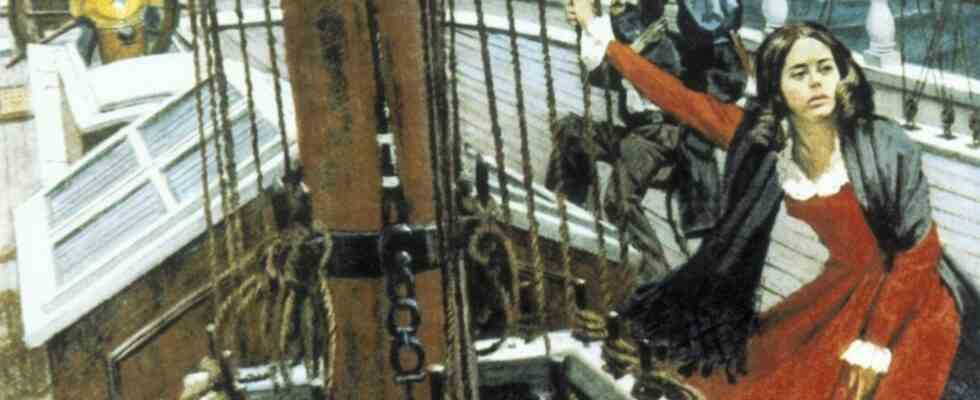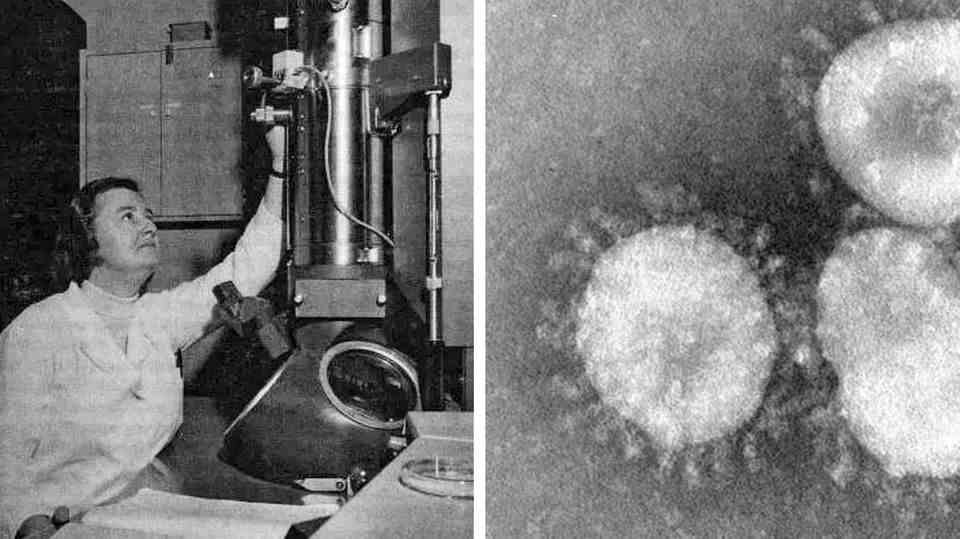19th century
When the captain fell ill, this woman sailed a clipper around Cape Horn and survived a mutiny
During the trip around Cap Horn the ship was driven far away.
© Atlantic Mutual Insurance Company / PR
When the captain of the “Neptun’s Car” fell ill, his wife took the helm. For over a hundred days, Mary Ann Brown Patten guided the sailing clipper around Cape Horn to San Francisco. But the heroic deed brought her no luck.
In the middle of the 19th century, sailing ships experienced their last heyday before they were finally supplanted by motor ships. Faster merchant ships were never built than the clipper, and their captains fought incessantly in competitions. Whoever arrived first at the port of destination could take a whopping bonus. In 1856, Mary Ann Brown Patten, a woman, commanded such a ship and she brought the “Neptune’s Car” safely into San Francisco Harbor.
The races of the fastest sailing ships
The “Neptune’s Car” was launched on April 16, 1853 by the Page & Allen shipyard in Portsmouth, Virginia. It was the largest clipper ever built in the Commonwealth. Clippers were very fast and therefore profitable. But the racers were also more fragile and the journeys risky. In July 1856 the ship left New York. Mary’s husband was the captain. Mary Ann Brown Patten had accompanied her husband on the first trip. She was 16 when she got married. Joshua Patten had taught his wife how to navigate, and proudly noted: “Mrs. Patten is unusually adept on the ship, even in foul weather, and would no doubt be of use if she were a man.”
Alla is 90, operates every day and doesn’t think about stopping
14 images
But on the second trip, Joshua Patten fell seriously ill. The first and second officers who were to represent him were both unsuitable. One could neither read nor write, the other sat below deck in the ship’s prison.
woman at the helm
So the pregnant Mary wanted to take over her husband’s duties, but the first officer tried to start a rebellion. But because he himself fell asleep during a watch and the ship almost ran aground, the crew did not follow him, but put their luck in the hands of the captain’s wife. In addition, Mary wanted to continue the route, but the first officer wanted to turn around and return to New York. This would have given the team a chance to win prizes for a successful and fast journey there. Mary Ann Brown Patten steered the clipper to San Francisco, passing the southern tip of America, dangerous Cape Horn. She had to navigate around icebergs and take care of her husband on top of that. She didn’t want to call at a port. She feared the crew would run away. Then she would have had to give up the ship and the valuable cargo.
Save drive
When she reached San Francisco on November 15, 1856, she was six months pregnant. She failed to break a record at 136 days but was only beaten by two other ships this season. In a letter to the insurance company, she later emphasized that she had fulfilled “a wife’s simple duty to a good husband”. Today, this modesty is criticized from a feminist point of view, but one must not forget the circumstances of the time and the particular situation. Because, strictly speaking, Mary Ann Brown Patten wasn’t allowed to sail at all, not because she was a woman, even for a man with no proven qualifications that would have been tricky. So she had to avoid the impression that she had reached for the role of captain, what was important was the impression that circumstances had forced her.
unhappy ending
The New York Daily Tribune, February 1857, states: “Her health is greatly impaired by the hardships she has been through, and she is near the time of motherhood. Yet she is not in the least sparing, but is faithfully and steadfastly devoted to her husband.”
Mary Ann Brown Patten’s efforts were rewarded neither by the shipping company nor by fate. The shipping company reduced the prize money and pay her husband was entitled to. He never recovered and died a few months later. Mary fell ill with typhus and tuberculosis and four years later followed her husband. The son she gave birth to became impoverished and drowned at the age of 41.



